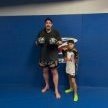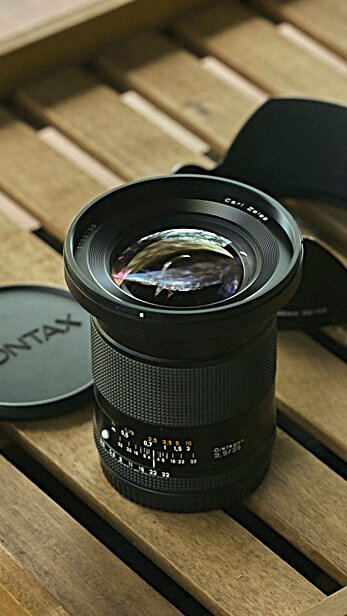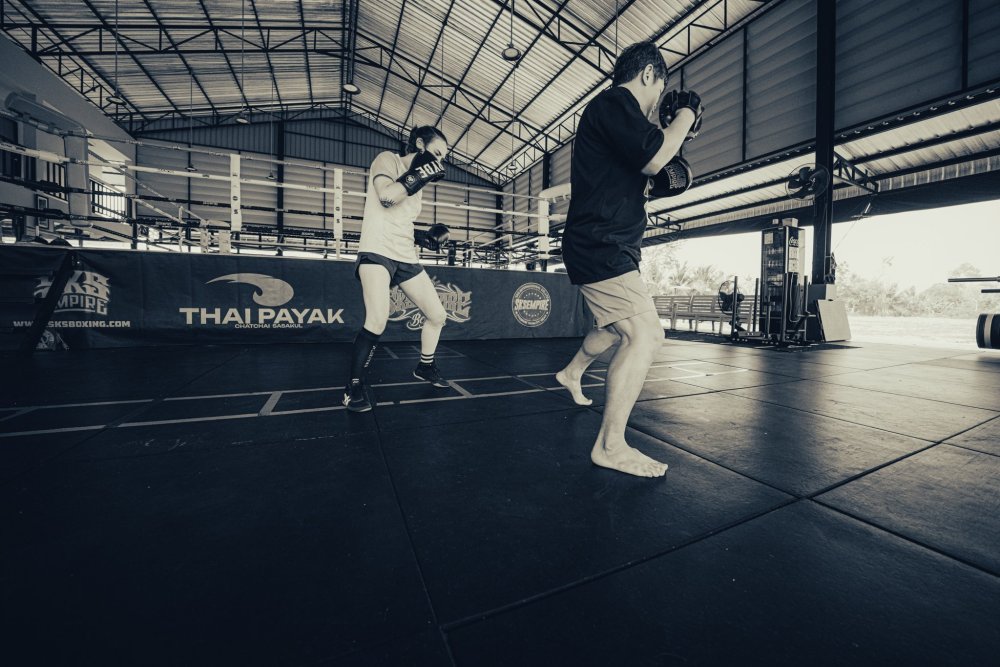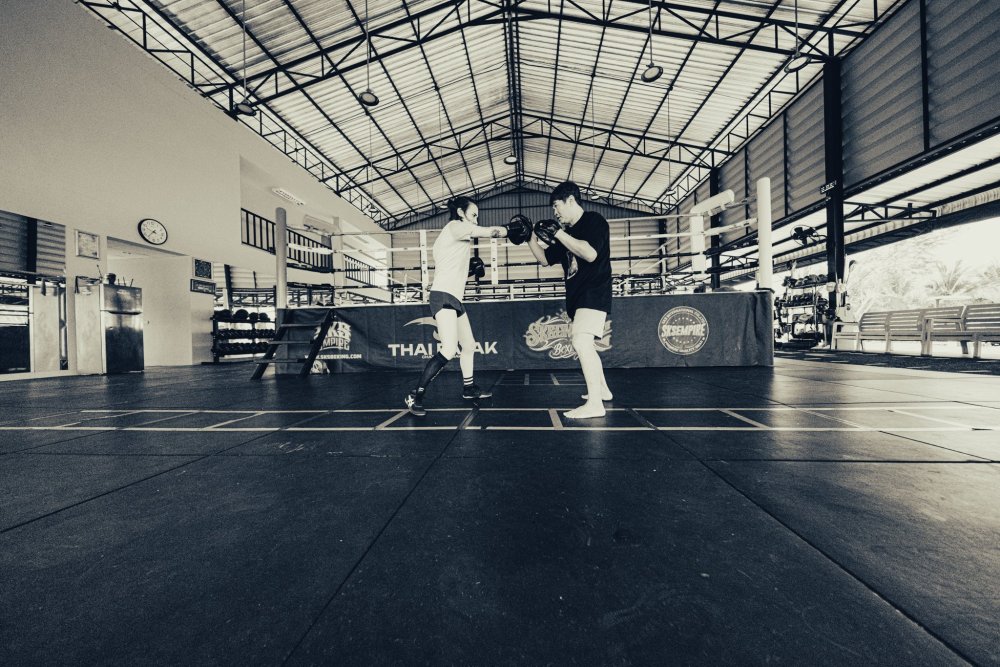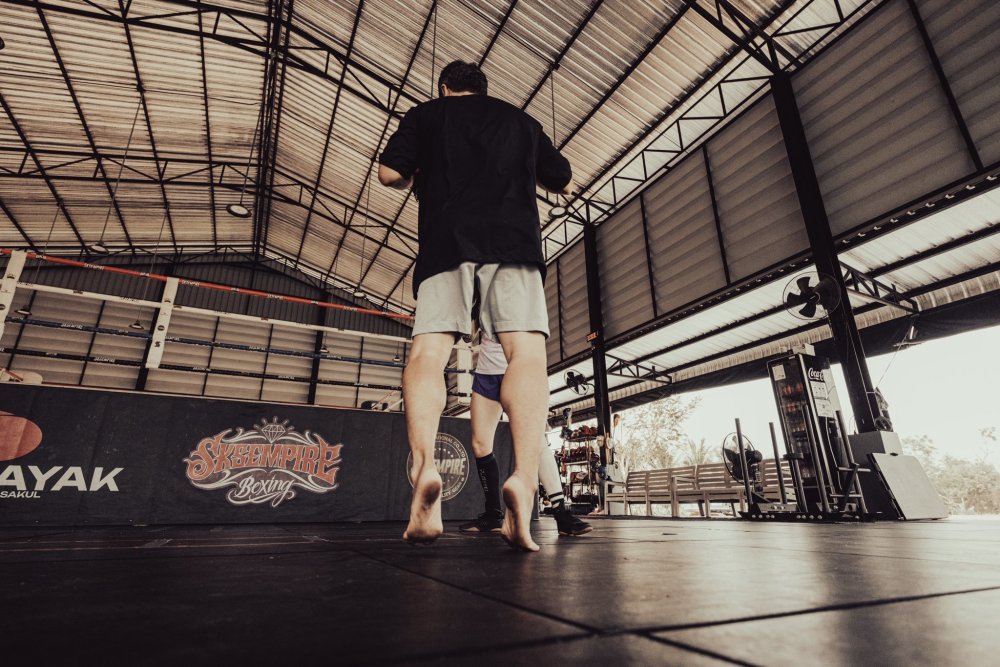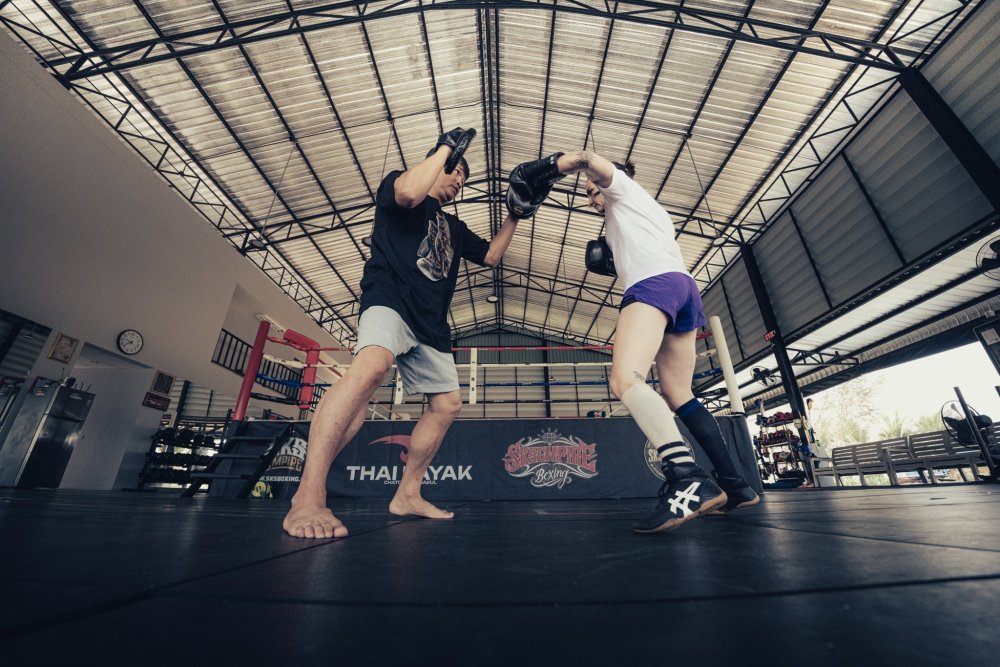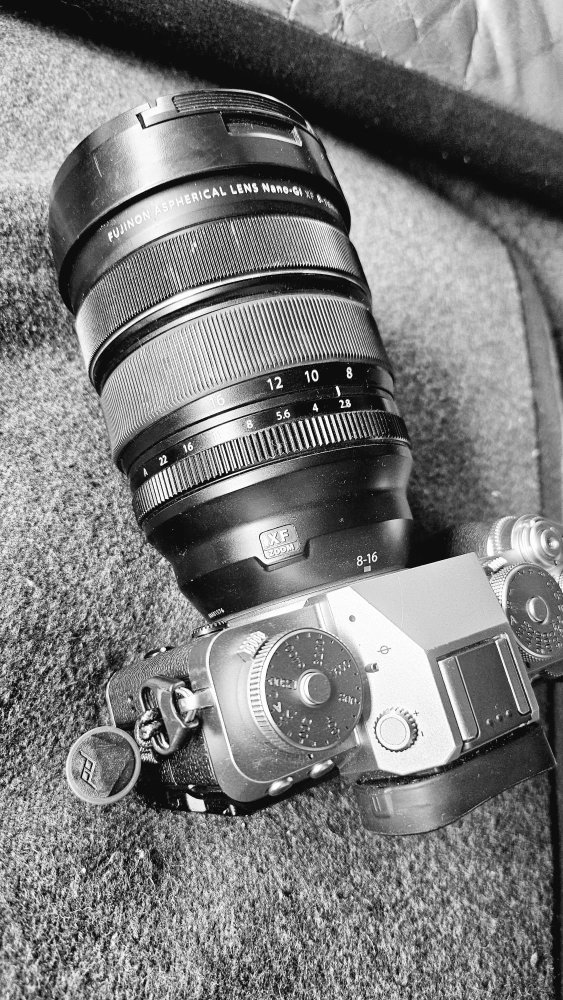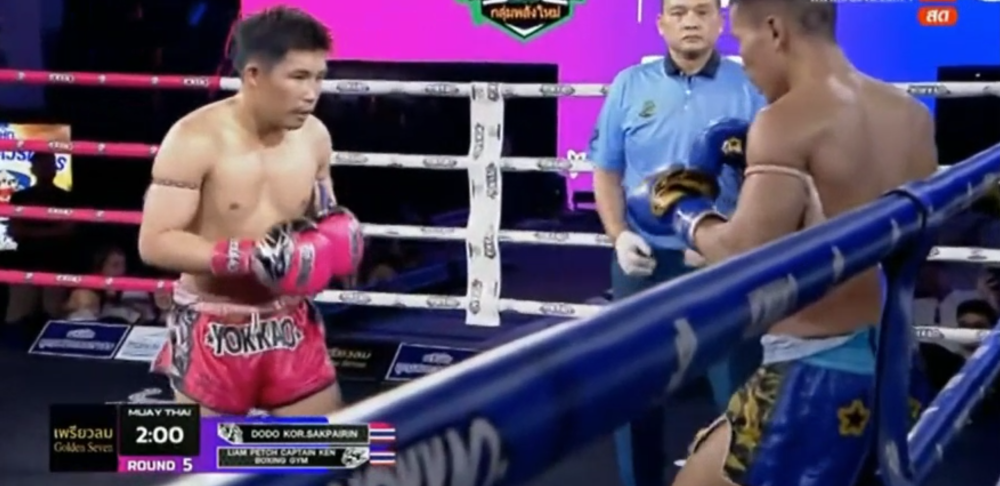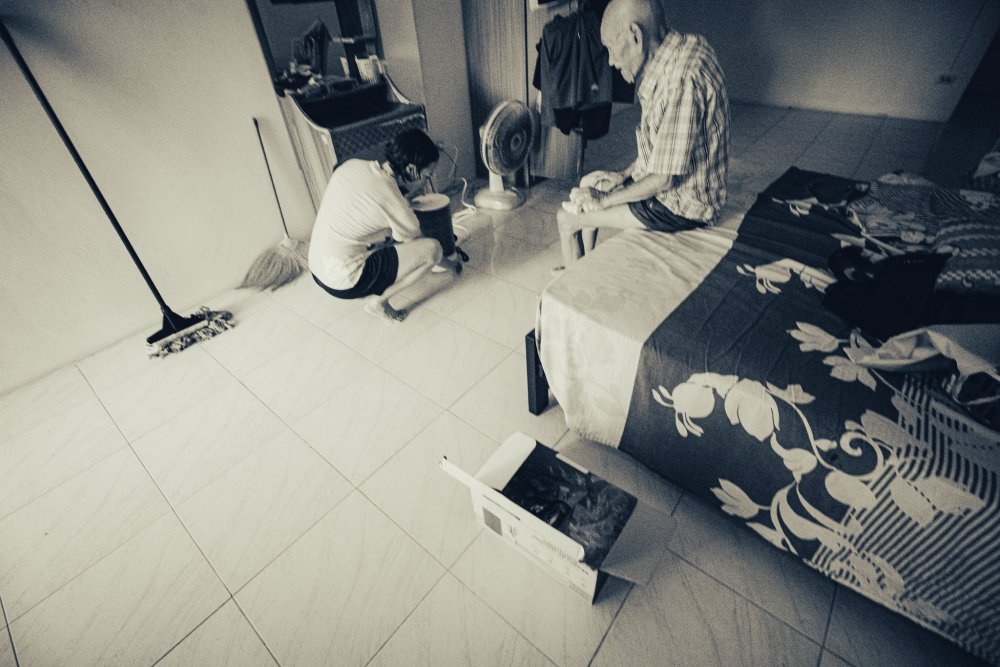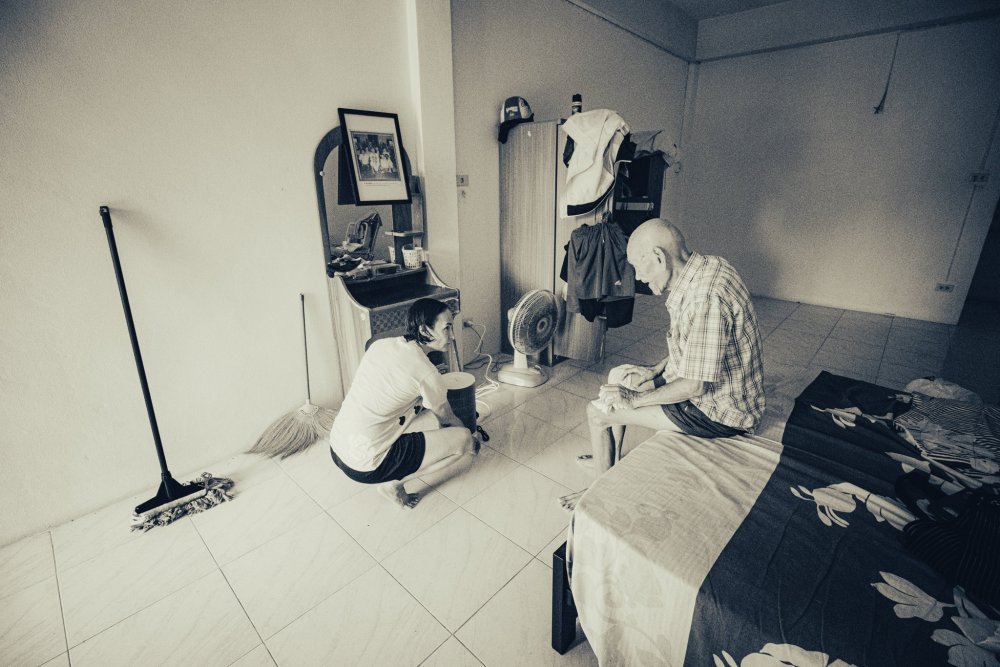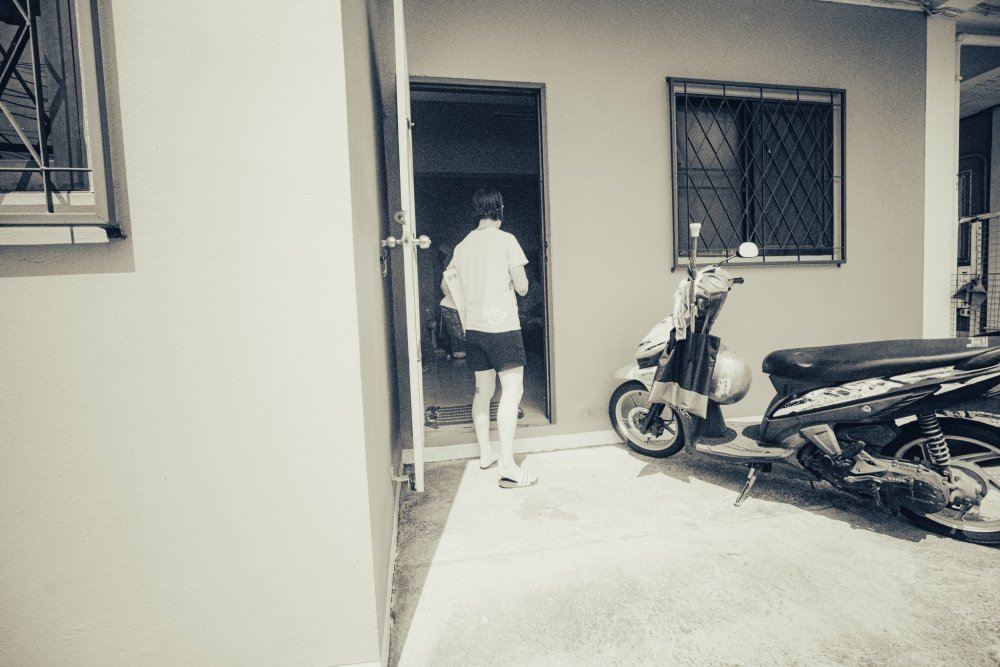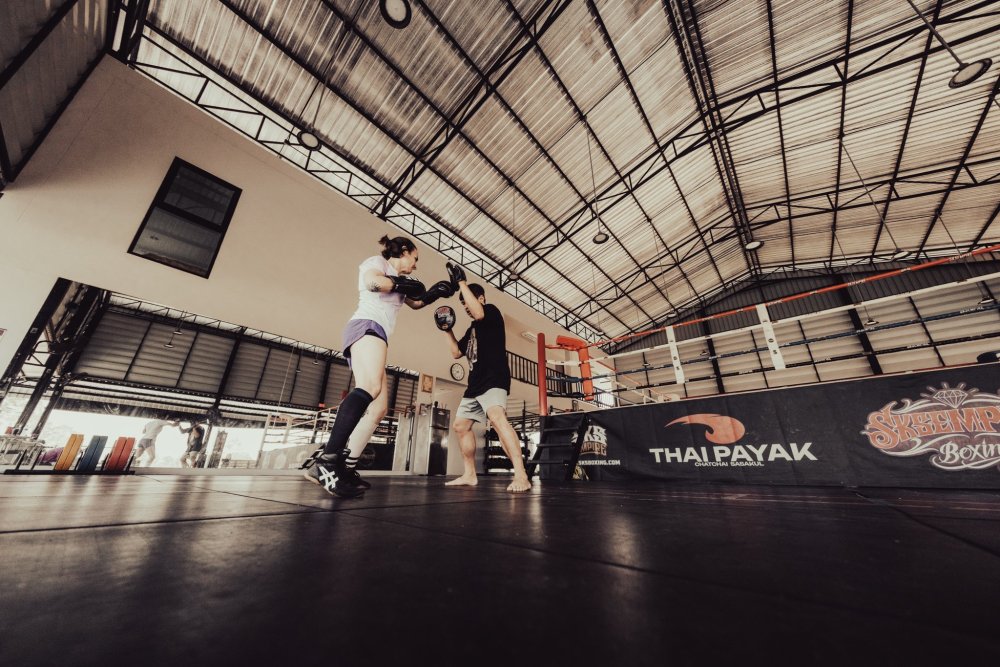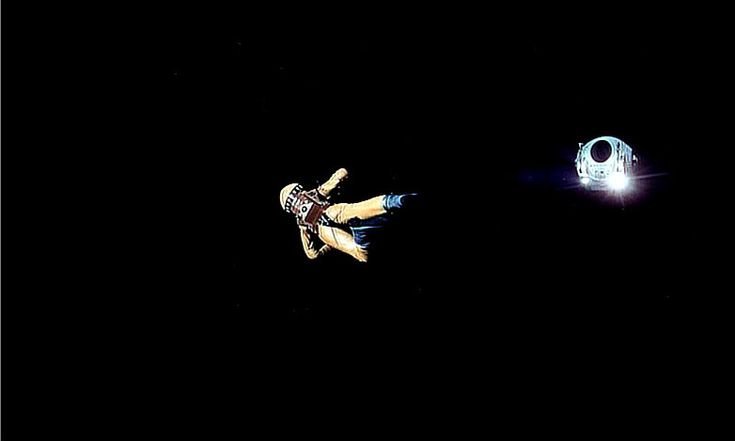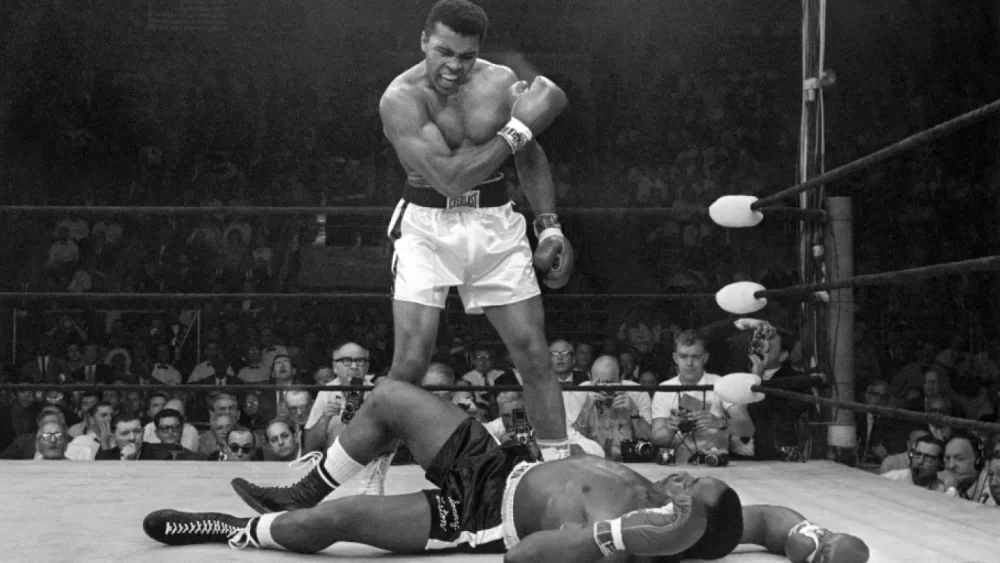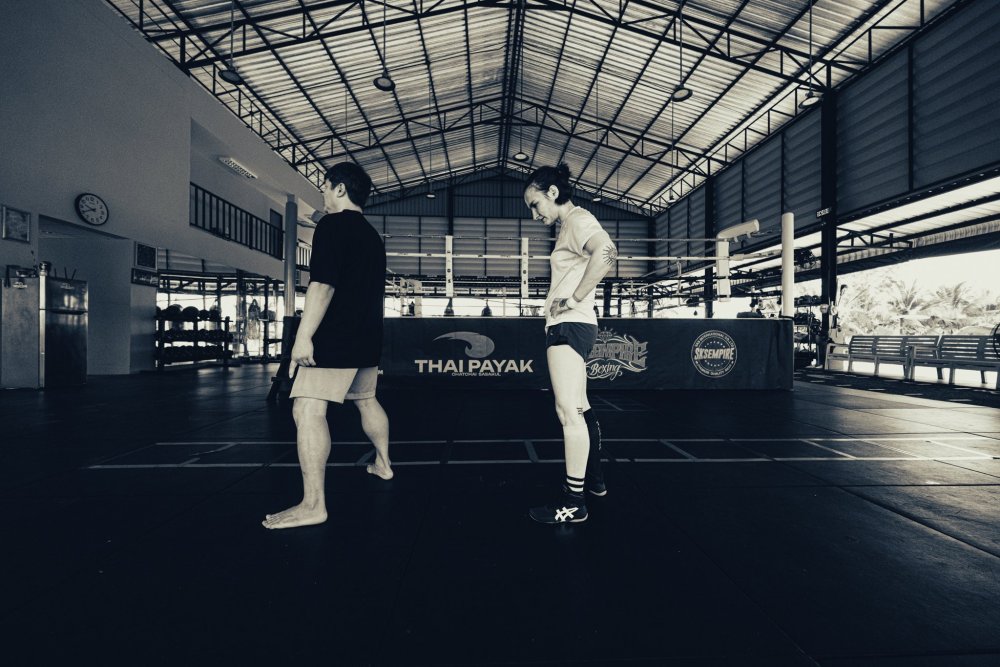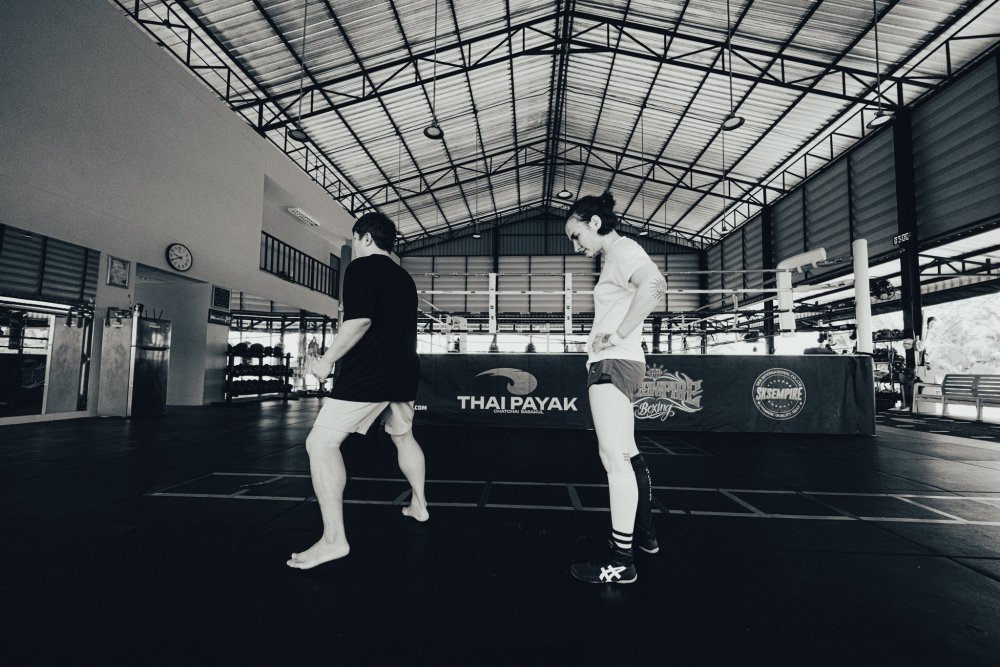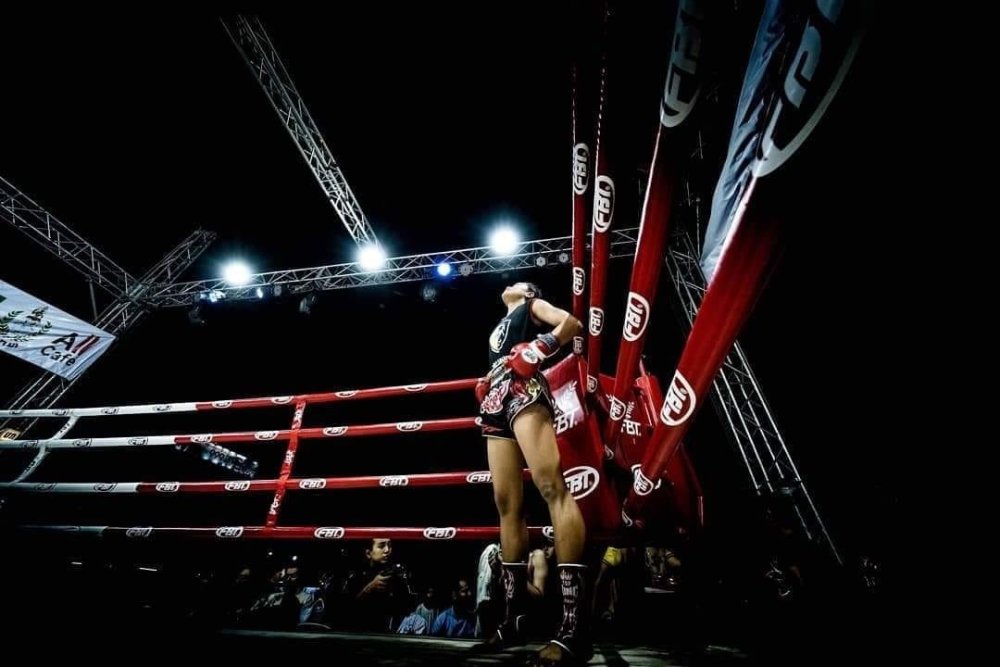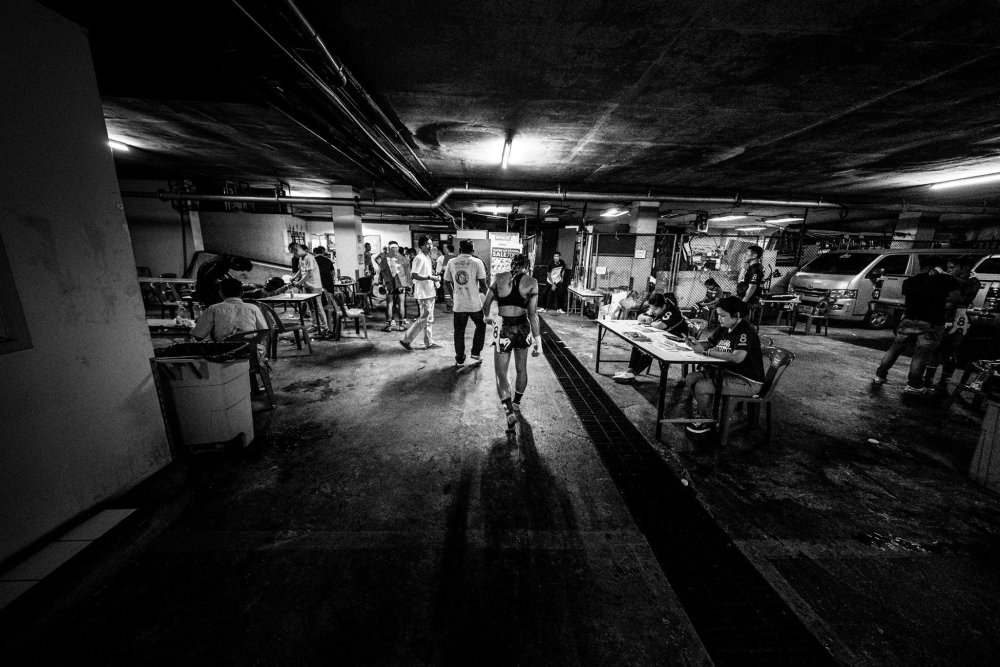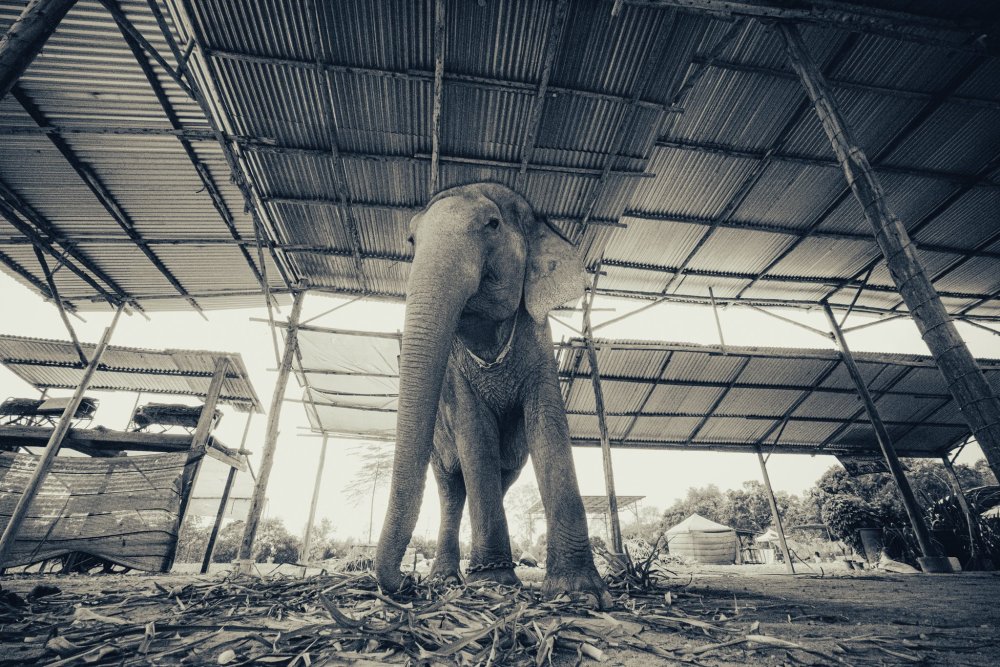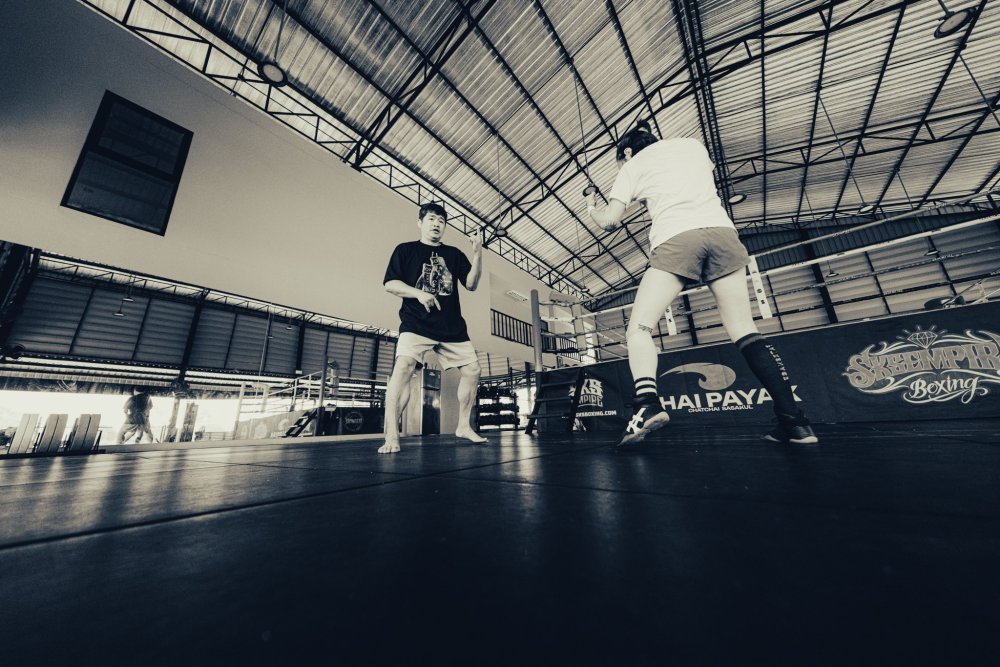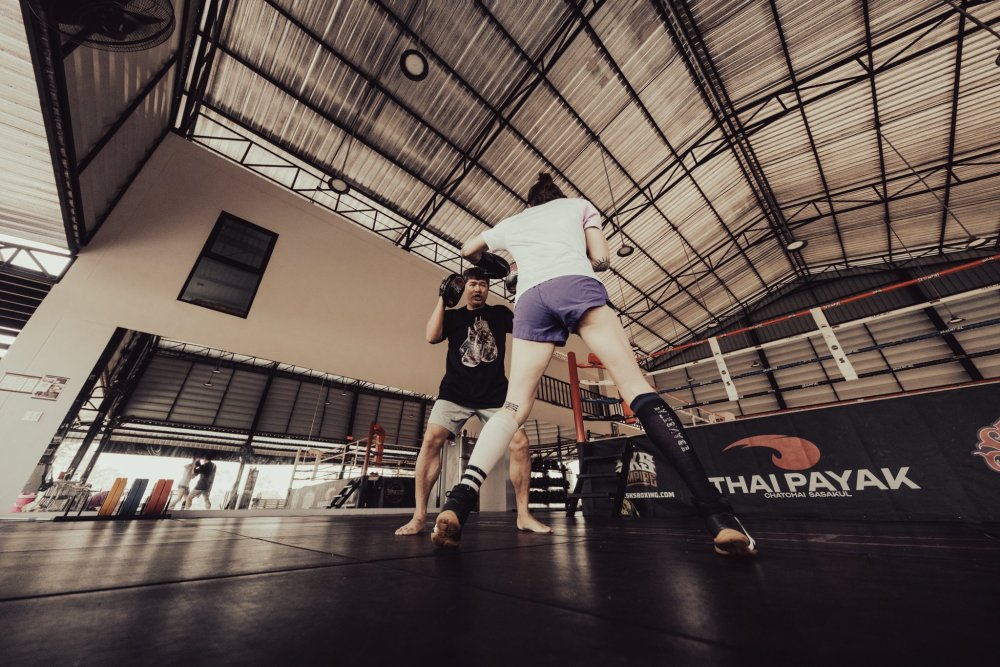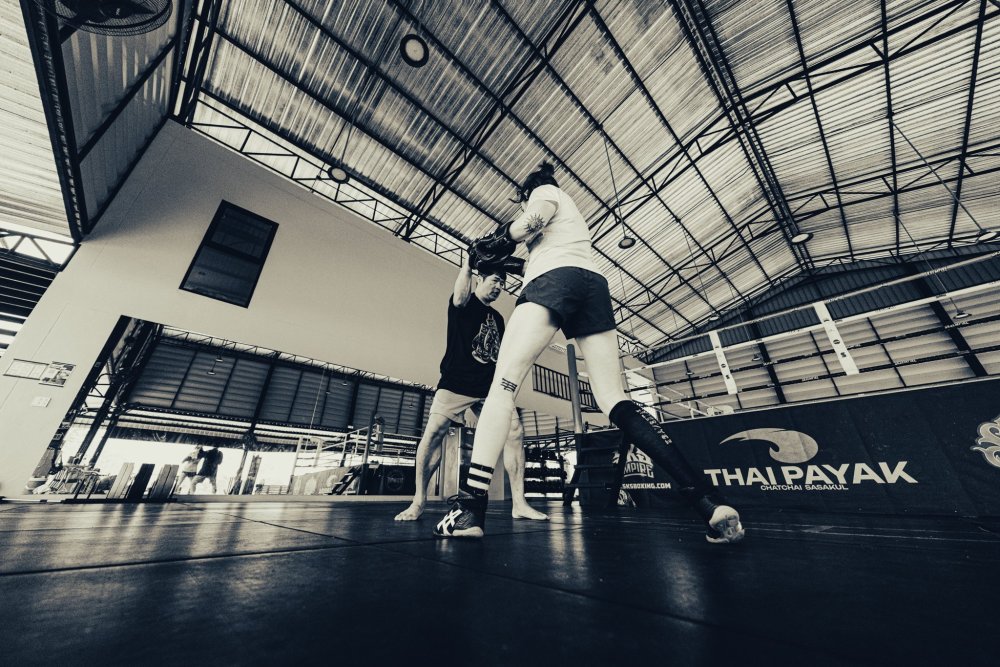Leaderboard
Popular Content
Showing content with the highest reputation on 02/16/2025 in all areas
-
Muay Khao in Padwork - note a little bit advanced stuff Talking a little more about Muay Khao training (and padwork), beyond some basic things like the padman doing rounds of "latched on" work where you trailer hitch and continuously knee or work into knees, there is a shape to Muay Khao that involves building up the fatigue in your opponent, which involves continuous pressuring and tempoing early on, nothing rushed, importantly with the mentality of depositing fatigue. Even if you don't have a padman aware of this, you can do this on your own, of your own device. People do not think much of manipulating or effecting your padman, but taking cue from David Goggins trying to mentally break his SEAL Team trainers, you can use your padman's energy managements to become aware of their fatigue, tempoing up or displacing them when they start to manage. This builds up your own sense of perception, becoming acutely aware of its signs, and developing responses, things that will serve you well in fights. This doesn't mean going HARD, like 200%. It means managing your own fatigue while you work that edge and tax your padman. The purpose of this is to slow reaction times and decision quality in later rounds in fights. You don't win fights early in Muay Khao work, you prepare the material so you can work late. A great padman will see and help you train this shape of the rounds, even as they manage their own fatigue. It goes without saying this involves not just "following along" with called strikes, which I believe is detrimental on a deeper level, because what you are training in those cases is "being dictated to". Lots of fighters have this problem, they have spent countless hours of (unconsciously) learning to be steered, so when their opponent looks to dictate timing, space or rhythm they have years of being comfortable being dictated to. This though is a subtle line to walk, and it depends a great deal on the experience of the fighter and the quality of the padman. Ideally, you want padwork to gravitate towards a dialogue, a back and forth, which mirrors the dialogue of fighting, accepting dictated tempos and spacing, modifying them, shaping them in return. Good padmen (who aren't just burning you out with kicks or holding combos over and over, largely ex-experienced fighters) will recognize this dialogue dimension, and you'll bring out more of their "fighter energy" and creativity, which is Golden stuff. Lesser experienced padman, or padmen who are just grinding, may not respond well, but you want to get into that zone of your 5 rounds being shaped like a fight...and for a Muay Khao fighter that means depositing fatigue in your padman early, if you can. Even if you can't, the aim of recognizing stalls, energy management, gatherings, and working on them yourself (not being passive) is a perceptual skill set you want to develop. For Muay Khao fighters though, you want to get to that clinch, or those finishing frames in the later rounds. You have to feel those angles of dominance, the cherry of what you built in previous rounds. Great padman know this, and develop pathways later where your body can sense, can experience those finishing elements. Femeu fighters, other style fighters, have other shapes in their fights. This is specific to Muay Khao.2 points
-
Just some notes from today's casual shoot. I don't always photograph at Chatchai's (we go 2x a month), but it is a great opportunity to just experiment with aesthetics, or to change the way I see. Ultrawide & Wide for Muay Thai Photography I've always been very drawn to wide lenses for Muay Thai photography, if only to get away from all the focus on "the action" and the proverbial sweat-spray shot. Mostly I've shot with longer lenses to get away from this moving in the opposite direction, to explore more the psychological aspects of fighting, and to locate what might be called sculptural body forms, but honestly, I've wanted much more to shoot in wider lenses, because I think the sense of space, of emptiness, is really what the art of fighting is about, like scuba diving is about what you do IN the ocean. Its harder to do in fights themselves because you don't have control over your setting and are locked more or less into one or only a few vantage points. I've been lately interested in the Contax 645 35mm lens (27mm full frame), (above), adapted for the GFX system, in part because it seems to give that "what the eye sees" kind of field of view, something that I find in many of the beautiful films of the 1960s, and some early documentary photography. You can see a short article on the lens that attracted me. I want a little more of that tableau feeling, with some beautiful sample shots. I love this sort of photography, and I'd like to bring that nobility to Muay Thai. What I'm interested in with this Contax lens is that many times I encounter situational muay, often with older fighters, scenes that are full of details and composition, that it just feels like it has to all be captured, rendered, brought forward. With that in mind I went back to my Fujifilm 8-16mm (12-24mm ff), above, which I really forget how much I love, a wide angle zoom on the X-series cameras that is underrated in the images it can pull. I have shot some very memorable photos with it. Today I shot Sylvie training with Chatchai at his Thai Payak gym in Bangkok just to get reacquainted with the wider view. I want to get used to seeing-in-wide again. You can maybe see what I see even in these somewhat casual shots, the way that the space envelopes the figures, and the figures almost arise from it. Note. I'm not a super technical photographer, and not really a gear person. I see things I like in my mind, my hands, and then look for ways to achieve it. I do like the 8-16mm, and its zoom is really very helpful in muay settings where you cannot change your position easily to alter the composition. With ultrawide this is really important especially regarding the distortion, not only how much distortion there is, but what it is that is distorted. The zoom is super valuable. photos on this thread are unfortunately compressed and lose sharpness. I'm hoping to see more wide angle and even ultra wide treatment of the sport, because the art is really all about the spaces that hold it. And I've ordered the Contax lens and the adapter, the first time I'll have shot with a vintage lens. I'm very excited to see what will show up on the very large and detailed GFX files.1 point
-
Here are some thoughts I had today regarding padwork which made me think about your question. It doesn't connect directly to your question, but it does open up thinking about padwork in different ways. (Also, thank you for your kind words - I realize that I neglected thanking you as it means a lot when people learn these deeper qualities, can feel that "language" element, and its bothered me that I didn't respond to what you said). If you click the top banner of the below you'll be taken to it. It is somewhat advanced stuff though, not easy to do or get to, but it does open up different ideas about what padwork is for, and what you can get out of it.1 point
-
Watched Sylvie's padwork today, something new I really have encouraged to happen and that she has been doing daily for a few weeks (?). Tons of in-the-pocket rhythms and improvisations, space management. I can see lots of growth, creativity, enjoyment. Good, good stuff. Unfortunately just like everyone else who has trained her for maybe 4 years now, they all want to take away her clinch. Nobody likes her clinch because it feels reductive. Hey, nobody respected the muay of Samson, Langsuan, even Dieselnoi either, this is a long story with the style. They don't care that she can beat 60 kg girls with it, and is hell for pretty much anyone to face, and has won nearly 200 fights with it (almost every win a direct result of her clinch), its an anti-style especially to the contemporary eye (which has been shaped by Entertainment Muay Thai). This is really good work, but its been years since she's trained with anyone who loved her Muay Khao stalking style and developed her into a clinch demon. All of her clinch dominance in the last several years, pretty much since COVID, has been pretty much kept on life-support by her alone, every clinch partner much bigger than her, stronger, Thai, so she just is managing controls, never being able to experience dominance in the grab, that taste of blood in the water with the lock, every kru in their own way discouraging her from the one thing she has been the best in the world among female fighters at. This is just the morphing of the opportunities of muay in Thailand, and something that has to be lived through. I'm excited for the in-the-pocket work, it fits nicely with what she's been developing with Chatchai. It's very good stuff. But ideally, all that pocket work should be used to pressure and punish the pocket so her clinch is even more unstoppable. Not sure how to get there, giving the state of Muay Thai and the place clinch has within it now. It's been sheer willpower from Sylvie that she is even the clinch fighter she has been over the last several years. Clinch is a vulnerable skill, it erodes quickly, and true clinch requires all kinds of rhythms and set ups to make it effective in the later rounds. It's a very complex, systematic approach to fighting. It's not just about winning clinch positions. It's the culminating persistence of them, using fatigue as a weapon so mistakes get made, positions neutralized too slowly, a bit late, windows getting bigger and bigger. I'm hoping this all comes together. If it does, and Sylvie can regain that late locking effectiveness, watch out. It will be quite a combination. This difficulty though, in the wide view, is that proper Muay Khao training likely does not exist as a whole any longer in Thailand, and that we've had to piece together elements of it even to get this far. There is an incredible bricolage to training in Thailand if you want to reach back into what the Golden Age was, because so much of the methods of muay have changed. Not only is the sport fought differently, and trained differently, its also thought differently even among Thais.1 point
-
Lessons in Narrative I love this fight from January New Power soooo much. It explains why in trad scoring you can't just add up "points" or count "damage". It's almost entirely symbolic control. Dodo starts telling his "story" right away, and its the same story the whole fight: "Your strikes don't matter, they have no effect on me, I'm coming". He doesn't rush, he only ups the metronome in a few decisive points in the fight, he is entirely dictating, and it doesn't stop. And the fight is very easy to follow in terms of dramatic narrative: Will he break through? Will he do "enough"? When he reversed direction (after getting his head snapped back by a punch in the 5th and giving a bit of a humorous head shake), after so much stalking...and Blue follows giving chase, his few moments of femeu slipperiness swing the scoring hard. After landing endless strikes Blue is suddenly out of it. There's no "KO", there's no highlight reel moment. He's taking head kicks glancing off the dome and high scoring mid-kicks. It's all tempo and imposition. Dodo Kor. Sakpairin (red) vs Liam Petch Captain Ken Boxing Gym (blue) watch it here: https://www.facebook.com/groups/muaythaiphotolifeideas/posts/3432943350176138/1 point
-
An interesting phenomena is older Muay Thai coaches in the West having to confront the growing CTE fear, which they view as alarmist. People just don't want to join gyms, spar and get CTE. These coaches view this worry as alarmist and exaggerated, and cutting into the potential of the sport. I'll just say that when the sport is sold as hyper-violent, all about the KO (marketed through endless KO highlights, promotions hyping "KO rates", and visibly changing the rules of the sport and how it is fought to generate head-hunting and knockouts, this is the shadow side of all that aggro-marketing. People just don't want CTE. It's one of the hidden ways in which the "modernization" or "globalization" of Muay Thai is likely undercutting its deeper, long term potential. The sport being turned into a commodity for entertainment, an entertainment thirsting for fighters going unconscious, may actually do well in a digital, short attention span environment...but, people like their brains, and increasingly don't want to be a part of the "will sparring give me brain damage?" experiment (the truth is, nobody really knows the boundaries on this). This hidden long-term marketing failure runs parallel to a second problem, which is if you change the sport into a clashing, defense-less KO fest, you are actually going to give brain damage to the Thai fighters who are the foundation of the sport, including Thai kids. It was the defensive prowess and capabilities which truly separated out the great muay of the past, just not as sexy a thing for the casual doom scroller or sunburned tourist. It is possible to market the deeper meaning and support the past capacities of the art, but this takes longer term thinking. In the meantime Western coaches will be answering CTE concerns.1 point
-
Coming back to mind the pejorative of young kids fighting in Thailand called "child abuse" recently by a redditor in a discussion I was having not long ago. I suspect this issue is about as complex and profound as any in West vs Thai relations and the ways Muay Thai is translated/transmitted to the West. But...this small piece of video goes into the complexifying folder of those arguments. Kids cheering as intensely as at any Little League game for their mate. This doesn't "solve" the ethical question, but it does push it further away from polarizing, simplifying pictures. It touches such a raw nerve along the faultlines of culture I do find the conversation almost impossible to have with some otherwise fairly reasonable people. It just is very hard to see the assumptions behind the very fabric of our culture, assumptions which likely distort and even motivate the appeal of Muay Thai itself to the West.1 point
-
Defense Even the best intentioned don't train actual Muay Thai, the Muay Thai of Thailand. The foreigner, even quite knowing ones, train 90%-95% offense, when in fact Muay Thai is probably about 70% defense. There is a reason why in Thailand when you have the lead you defend the lead. This is the position of the superior. Every fighter who gains the lead learns how to defend it. This is what distinguishes it - in skill, in spirit. The foreigner only SEES offense. Trains its words and vocabulary, missing the entire thing. Even the high-so Thai, quite-Americanized, sought to take out as much defense as possible, every drop and drip of it, because even Thais can be very far from the root and tree of their sport, separated by class and commerce.1 point
-
1 point
-
The Muay Thai Library is so incredible. Today I was realizing how many men we have filmed with who have passed. This is a generational greatness, and it is an honor to have met these men, and in some cases to have come to have known them. Taking a moment to think of them and feel them. Each of these men a universe of a muay within them, of which we have touched just a teaspoon. Andy Thompson Morakot Sor. Tammarangsi Sangtiennoi Sor Rungroj Namkabuan Nongkipahuyut Sirimonkol Looksiripat Kaisuwit Sungila Nongki1 point
-
We've been watching a lot of David Lynch since he passed. Rewatches of Lost Highways, Wild At Heart, Blue Velvet, Inland Empire...and now working through Twin Peaks. I talk about it a lot. One of the things coming through is the way that he works with melodrama, and in Twin Peaks the soap opera tv form of it. It allows archetypal (in fact at times wooden) characters who are moving through scripts they repeat, stories that are told about these kinds of characters. As the actors say in Inland Empire (paraphrased), "I thought we were doing an original script, I wouldn't agree to do a remake". IN this sense Lynch is saying we are all doing "remakes" as we repeat the scripts we have inherited. But the characters are experiencing very real, intense emotions in these scenes, just like we do in our "real" lives. We are acting in scripts, doing "remakes", but living with tremendous pathos within them. Lynch, I imagine, is making two points about our pathos. There are two doors. The first is akin to Buddhistic (un)attachment. The only reason we are suffering (or enjoying) intensely is because we are attached to these wooden characters, the "remake" we are making. If we saw that these are just recycled characters the grip of our emotions would lessen. But, there is within his films & show another door. Sometimes characters suffer or intensify their experiences so thoroughly they transcend it, they are transformed, in a passion-of-Christ (archetype) type intensification, often it is female characters who pass through this door, with a sort of glowing, mixed divinity. As such with the Muay Thai fighter who is a woman, in a certain way. Female fighters especially are putting on the "clothes" of the fighter, because the fighter is a model of hypermasculinity in many cultural traditions.1 point
-
You can't train yourself, anymore than you can tickle yourself. Yet, on the other hand...you are always training yourself.1 point
-
Found the old footage of Sylvie's 2nd fight (Fight 12) vs Angela Hill, accidentally, waking up my very old YouTube account the other day. We thought the video of both those fights were lost, taken down by their team to keep opponents from scouting her, as it was, back in the amateur NY days. Sylvie tells the story on her blog, taking the fight vs the best female fighter on the East coast on 24 hrs notice (wrecked on fertility hormones because she was donating her eggs very soon to afford to come back to Thailand. Not training, giving up big weight, out of shape driving straight from work to the fight), it was quite a thing. Perhaps her most "raw" fight, never to win such a fight in a 100 years. Angela all crisp in her technique, she was a bit of a situational weight-bully back in the day as that was the ethic you took every advantage you could get, and she was properly feared as big, aggressive, skilled fighter, sometimes finding herself fighting the proper 100-102 lb girls who didn't even have a weight class at 105 lb; not a criticism, nothing unfairly done as there were so few girls, but few wanted to face her in that small scene where fighters really valued victories. She had big dreams as a fighter and later ended up having to fight up a ton in the big girls of the UFC, something that probably deprived her of the dominance that would have made her a big star, giving up all that weight in the ring. If she had been fighting down in the UFC it would have likely played out quite differently. In fighting if you fight enough it goes and comes around, you go through every permutation. Cool stuff. But, Sylvie didn't get knocked out, which was a big aim, and got to just be raw in there one more time. That's what it was about that time, that's what coming to Thailand was about then, just to find opportunities to fight...at all. Sylvie took every fight possible because you might not fight again. Each fight chance felt like it might be the last, and you just could not grow without fighting, a principle she would embody in the many years to come. In some ways its my favorite fight of Sylvie's, its not even close...but close to the beating heart of it all. After the fight Angela was on the mic before the crowd, this was about when she herself was running out of opportunities in Muay Thai, and she announced to the crowd something like "I bet Sylvie will fight again", like...this isn't Sylvie's last fight, even though I whopped her...two-hundred-and-74 fights ago. That was the beating heart then. I love this fight. You see the raw, the "what was about to happen" that's beneath all those hundreds of fights to come...if you have eyes for it, and all the documentation of the sport and its art, all the expertise she would seek and learn, because she had none of it then. In some ways, its proper for this fight to be private (and we'll keep it so). Because its the hidden crucible, just before we came to Thailand. Sylvie almost died on the donation table (at least I thought she was going to die as doctors came rushing in), so at least her heart probably stopped, they never told us. And we were landing in a plane in Thailand to actually LEARN Muay Thai properly and fight it properly 2 months later. She was in the ring a month after that. 2012. Fight 13.1 point
-
People think its the padman's job (in Thailand) to make you tired. No...its your job to make your padman tired, especially if you are a dern fighter. But this does NOT mean go harder. It may mean that, but it does not principally that. Understand, you are learning when you do padwork, and if what you are learning is "This guy makes me tired", that is one of the last things you want to learn. Instead, use padwork to find the inner-patterns of rest, both physically and psychologically, the quiet ways experienced padmen work to recover, breathe, pace, control the tempo. And learn to take these, quietly, away. If you can do it to your experienced padman, you can do it to your opponent.1 point
-
Watching yet another very skilled Japanese Muay Thai fighter on Phetyindee the other day, I remain convinced - very broadly - that though Japanese fighters definitely hold the Thais, in fact Thailand's Muay Thai, in allure, they principally train in the aesthetic of Anime. This is to say, they are guided by a visual aesthetic that almost entirely forgets the art of Time, which is where almost all the art of Muay Thai is. They honestly, at some very deep level, "doing" Anime, which isn't Muay Thai at all.1 point
-
1 point
-
Caring for Arjan Gimyu Sylvie did a very good deed today. Arjan Gimyu in his 80s, 2x Coach of the Year, kru of Kaensak and so many other champions, has been somewhat confined to his room because of the air quality and his asthma. He lives a very spar life on a government check, just really a room and a radio and a fan. He usually drives over to Rambaa's gym in the afternoons so he can be in a kaimuay, the real form of the sport where kids are developing, pads and bags popping everywhere, but he's had to stay home lately. Sylvie bought a good Hepa airfilter he can run at night to clean the rooms air, dropping it off, plugging it in and showing him how to use it. She texts with him regularly when he can't make it to the gym, talking about how fighters did and such, keeping in contact. Just knowing that someone cares just a little bit more than expected goes a very long way.1 point
-
1 point
-
You get some of this in the somewhat wide shot of Ali's famous "What's My Name?" photo vs Ernie Terrell (1967). You need the rest of the "world" to feel the meaning of this moment. You need the composition including the white faces of photographers, you need the darkness of the crowd. The eye does go immediately to his asserting face, but it also swims around, settling on the prone opponent. It's hard to get these kinds of shots (and this one is once in a 100 years). But cameras in the day forced a development of compositional focus. Thinking and seeing in wide requires using wide.1 point
-
This photo accomplishes something, a focus, that is quite hard to achieve outside of ultrawide. You need the rest of the world, the gym world as a space to indicate how this very small thing is the focus. It's the contrast. You can miss the pointing finger, and that's the point. The feet are so much of the key to effective movement, which is key to effective striking & fighting. You don't want the finger to be the "point" of the photo, but rather its after-point, which communicates a wide (sic) range of relationships the information and the gesture. Not only the case in teaching, in Muay if the eye is very close and selective, one can frame very important details of a moment in a great complex of composition.1 point
-
1 point
-
1 point
-
1 point
-
1 point
-
1 point
-
What's nice is that the lens distortion which sometimes might be seen as a drawback can actually bring forth the actual form of strikes and movements, extending lines and speaking the truth about the moment in a way that a visually "accurate" lens would not, as in this shot where the wide stance, and the rotation coming out up from the floor has a kind of lyrical quality. You can see the communication through lines of force.1 point
-
I shot close to the floor as is often suggested on ultrawide, and I've had very dramatic shots from below with the lens in the past, but honestly I prefer the straight on tableau effect. Though, one of the benefits of being low is that architectural elements can really pop an give that Escher like effect (like here). I do like these photos, a lot, but I'm drawn to the wide lens I think much more in terms of that tableau 1960s cinema effect.1 point
-
1 point
-
Sometimes I muse that Muay Thai, Thailand's Muay Thai is like the elephant. One time integrated within the society, at the village shore at the forest for instance in Surin (a folding of the human & the elephant culture), and then become the tank of the military empire, then the diesel truck of the lumber and other industry, now almost entirely existing within the country for the tourist, a bend of fate I do not want for Muay Thai...but today, visiting this one who lives near our house, I feel the depression, the majestic depression of her. Today I feel her. A short film study I made.1 point
-
If... you are not your thoughts a fighter is not their strikes.1 point
-
I train out in Thailand and tend to do 5-7 rounds on the pads. Even though I'm now too old to fight, I kind of treat it as such. The first couple of rounds are lighter, to warm up, get my technique and rhythm going. Then I'll blast a few in the middle, full power. Later ones, I may mix it up- focusing on technique and correcting what I did just before, speeding up to test them at 100%. The final one will be full-on, to push my cardio again- drain the battery before it charges overnight..!1 point
-
Sylvie uses a wonderful term to describe the Westernization of Thailand's Muay Thai, through its Entertainment commodification. She says the West is terraforming Thai Muay Thai, and then taking glory for beating Thais in the new, terraformed world. It's a powerful analogy.1 point
-
There a beautiful story here, back in 2016. Sylvie was given a chance to win the Northern 105 Muay Siam belt, but she would have to beat Faa Chiang Rai, one of the best female fighters in Thailand for the 3rd time in a row in a month...and do it in her home province of Chiang Rai. We really thought that there was no way that they would give Sylvie the win on points, just because of circumstances, but Sylvie somehow pulled it out. She was awarded the belt, but then within the week (I believe) that she was stripped of it because farang could not hold the belt. It was given back to Faa. Sylvie wrote about the fight here. It was just such an incredible moment, being able to fight for a prestigious belt, a belt hermetic to Thailand itself, and even winning it, and then having it stripped, that in-between time before Thai name belts were starting to be made for Westerners, both in terms of audience and victory, the changing of rules, the opening up of the stadia. This was another time. But the beautiful part of it all is that even though Sylvie took Faa's belt in her home province, one way or another, 8 years later Sylvie arranged for Faa to fight for (and win for herself), the WBC World Title (I think at 105 lbs), I believe a title she still holds. This is the curious, beautiful gift of Sylvie, she weaves together Muay. Faa went from a Northern Muay Siam title to a WBC World Title, through Sylvie.1 point
-
I allways hit the pads full power to completely exhaust myself unless my coach tells me to take the power out and focus on technique! Sometimes if I’m doing something like teeps and knees we will switch to the bag and he will hold it instead of me smashing him full blast in the belly pad loads of times1 point
-
I've felt some pretty strong disillusionment as a photographer, which pretty much comes in line with the overall dilution of meaningfulness in digital communications, as everything gets stretched out into endless (truly endless) digital series, consumed in scrolls, catching affect-torquing algorithm effects (or not), much of it aligned to dopamine hits, which stresses us out into over-stimmed depression beasts. We take photos because this little fragment of reality...matters. And the art of the camera, its alchemy, is applying rites, practices and crafts to that image to bring that meaningfulness forth. To just dump that carved piece of the REAL into a knowledge mill, into a vast encryption pulverization is just fundamentally wrong, and deprives the photograph of the very sort of sacred (yes, sacred) life it was given. This is a fundamental crisis...and deeply affects even how I relate to my own images, or even the desire to take them. I've always felt that this problem is one of occasional aesthetics, that there must be forms out there, waiting to be created, which deny some aspects of this digital pulverization. (This I suppose are what galleries are for, or printed prints on walls in homes...to forestall the profanation.) This problem is absolutely unresolved, but... This morning I began editing my photographs of Kru Hem at TDet99 from yesterday and the first two photographs really spoke to me. They spoke to me as a pair. Together, they held a symbolic form, I might say. So I asked myself, how in this digital time (I refuse Instagram...actually since my Instagram account suddenly vanished several years ago, for no reason at all, but also because its form for photographs is dead wrong), could I even present them as a Symbolic Form, as a Two? What would be in some sense homological to how it might be if they hung on a wall, framed, side by side? The question was a very simple one, one that instinctively felt had an answer...at least a partial answer. I imagined, just place them in relationship to themselves in video (video holding its own very serious, de-aestheticizing problems in the scroll), but do so using a feature that I believe is what made large screen cinema different. The secret to cinema's magic was that the size of the screen cannot be taken in in a single glance. The action may occur here or there, but there are always areas of the screen to explore, at any given moment in the flow of time. The viewing eye sculpts, as it selects attention, in the narrative. (This is something, a magic, that no longer operates within our world of small screens.) I just entered one of these photos and selected out frames within the frame, and placed them in tempo with the overall frame, mimicking in part some of the nature of cinematic magic. I have no idea how or if this changes how the images may be received and experienced in various digital flows and scroll/refreshes, within the pulverization mill which grinds our attention, packaged for exchange in markets, but it DID change how I related to my photographs themselves. The process pulled me into them, and brought the pleasure of the large files I'm able to shoot with. I love exploring the worlds and pieces of worlds within a single frame, so it made me happy with my art, it changed the possible within it, rather than de-spiriting it.1 point
Footer title
This content can be configured within your theme settings in your ACP. You can add any HTML including images, paragraphs and lists.
Footer title
This content can be configured within your theme settings in your ACP. You can add any HTML including images, paragraphs and lists.
Footer title
This content can be configured within your theme settings in your ACP. You can add any HTML including images, paragraphs and lists.
